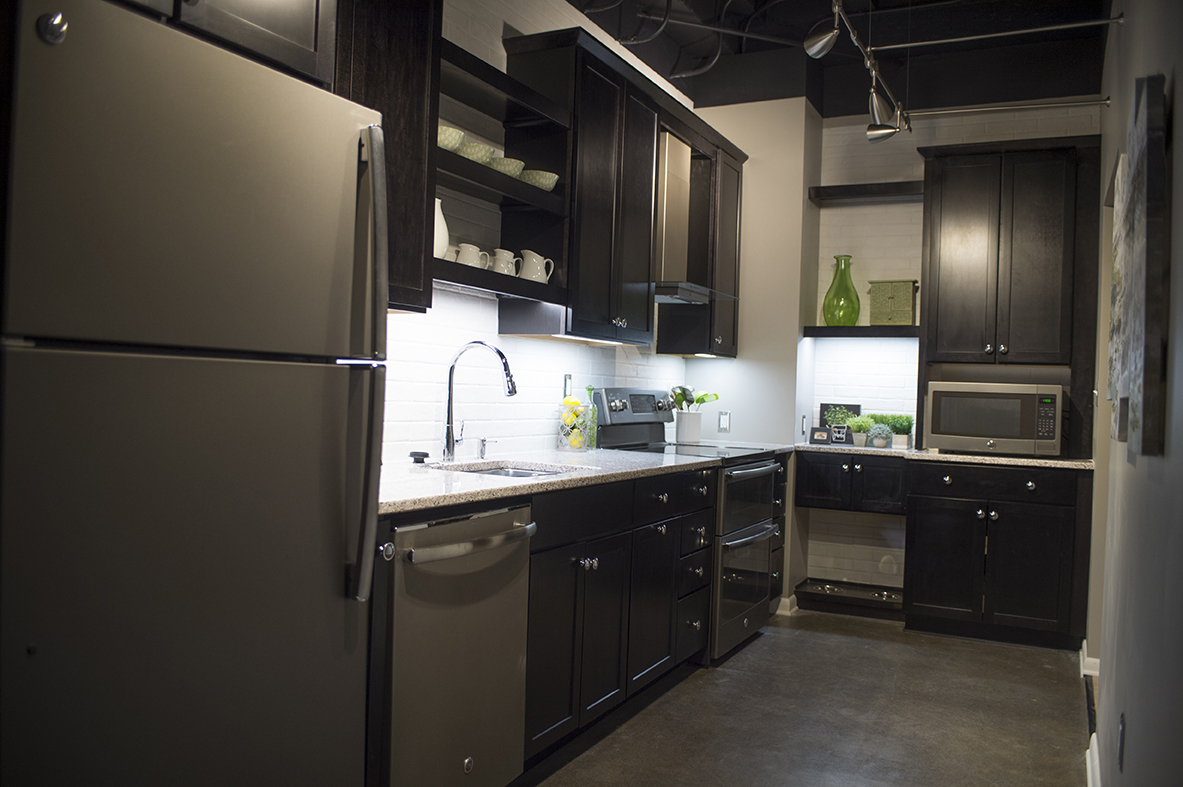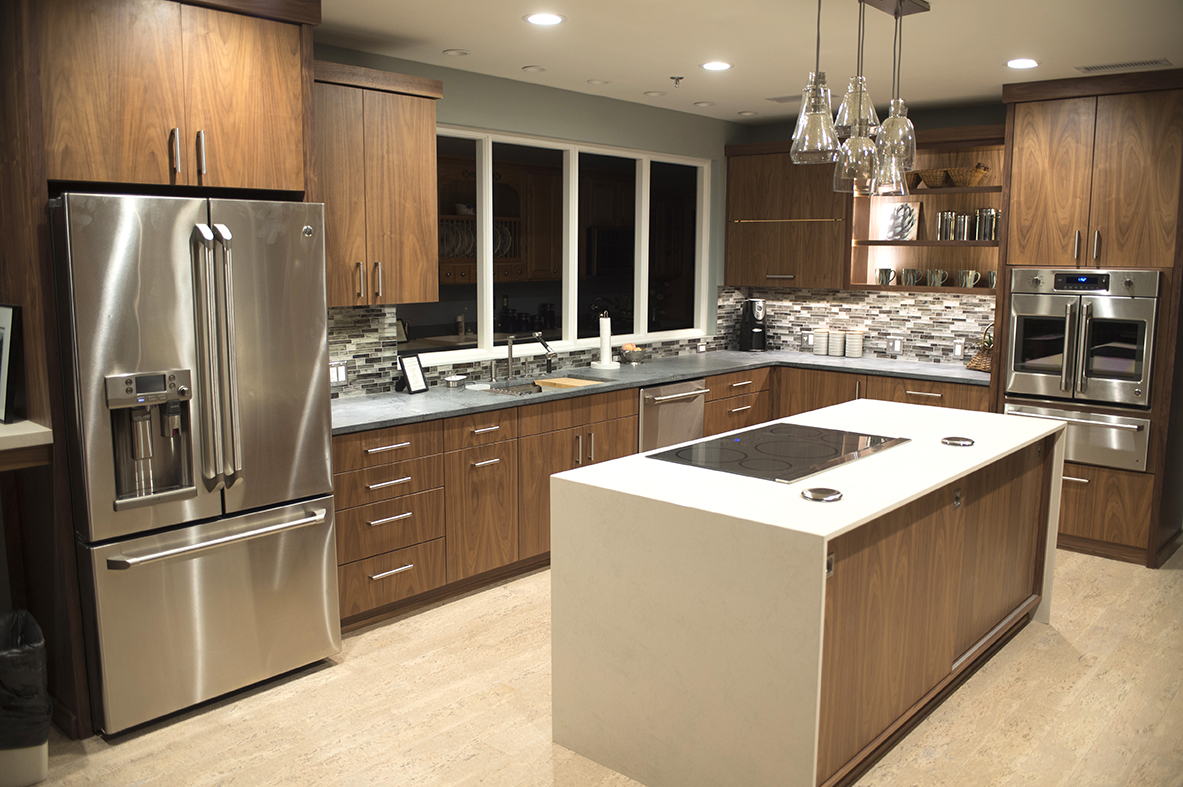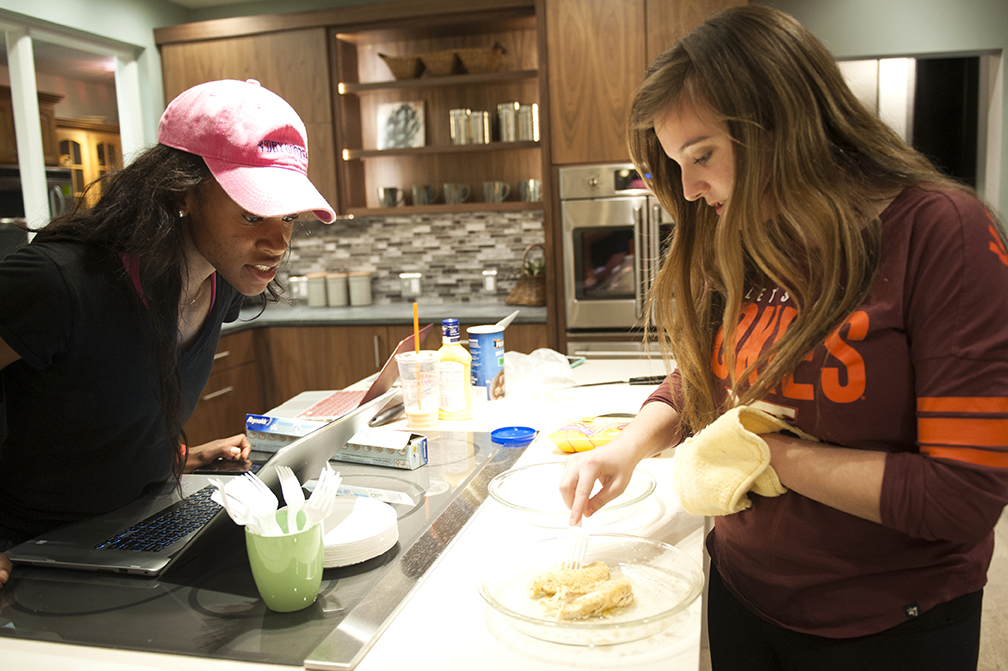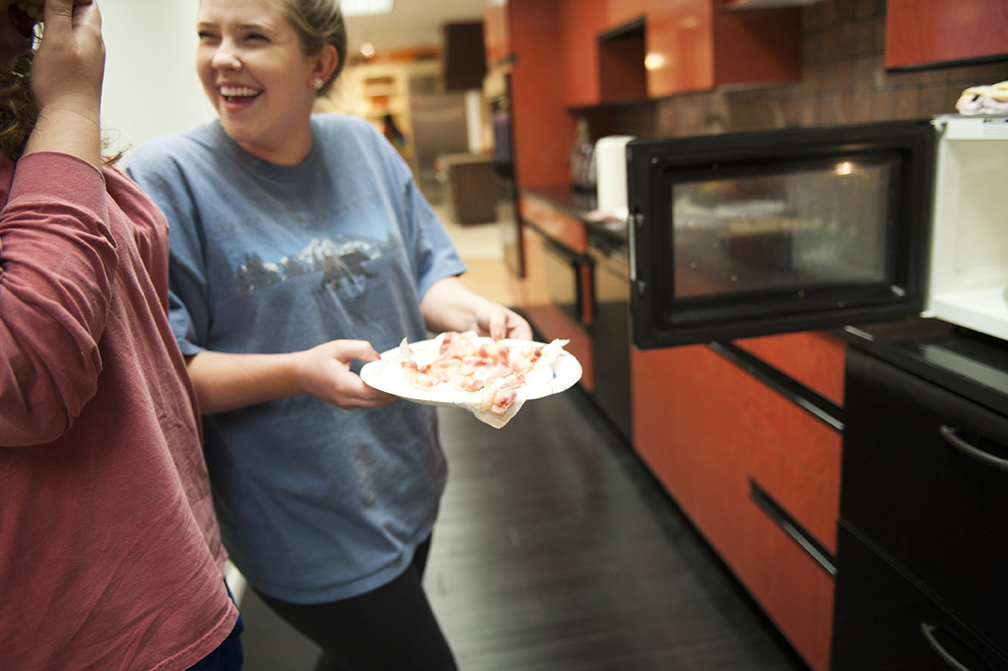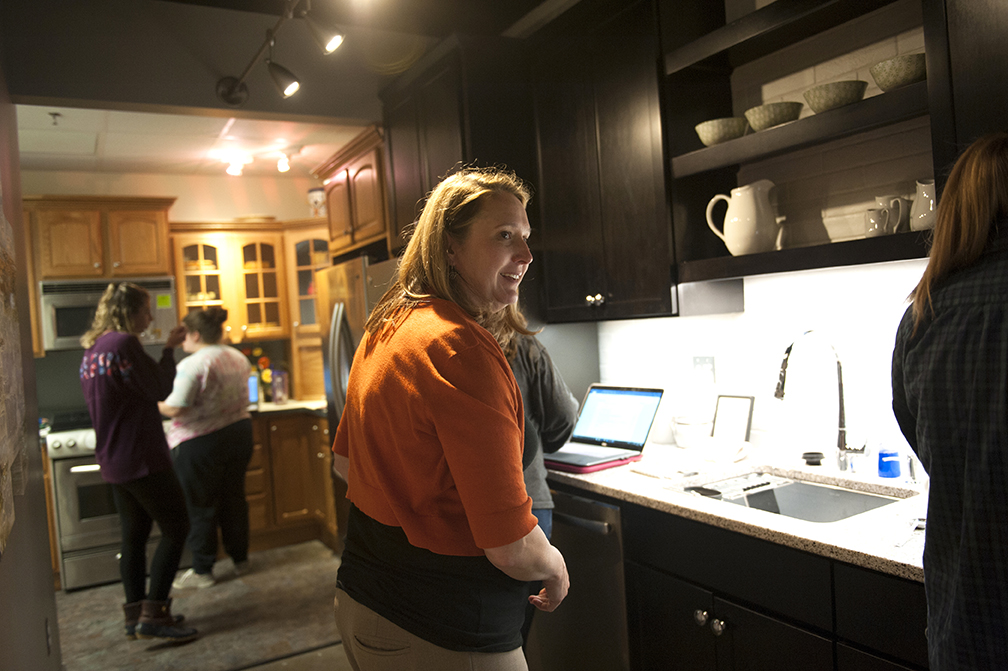Center for Real Life Design Launches with an Emphasis on Universal Design
May 1, 2017

Muted colors and matte finishes create a soothing environment for children with autism. A slate-gray cooking surface on a cream porcelain countertop provides contrast for those with impaired vision. And a low, shallow sink eases kitchen work from a wheelchair.
The Virginia Tech College of Liberal Arts and Human Sciences has reenvisioned its residential-design demonstration studio to reflect an expanded focus on universal design and sustainability principles. The newly launched Center for Real Life Design now offers faculty and students a multifaceted laboratory for exploring design and technology solutions for people with a range of physical and cognitive abilities and consumers who want to be environmentally responsible.
The studio — which replaces a kitchen-design space that opened as a collaboration between the university and the kitchen industry in 1998 — is launching with a broadened mission as well as two new kitchens furnished with appliances and other products donated by a range of corporations in the residential design industry.
GE Appliances, a major donor to the original space, has contributed appliances to the new center as well. In advance of the opening, the company’s president and chief executive officer, Chip Blankenship, will offer a College of Liberal Arts and Human Sciences Executive Insights Interview. Blankenship, who earned his degree in materials engineering from the Virginia Tech College of Engineering in 1988, will present People and Their Homes: Launching the Center for Real Life Design on May 4 at 2 p.m. in the Fralin Auditorium at 360 West Campus Drive.
Following Blankenship’s presentation, three events will take place across the street in Wallace Hall: an introduction to the design concepts and solutions used in the new kitchens at 3 p.m., a ribbon-cutting ceremony at 3:45 p.m., and a reception in the new space at 4 p.m. The Virginia Tech community and the public are invited to all four events.
“The reenvisioned center reflects our expanded commitment to all types of residential design,” said Julia Beamish, head of the Department of Apparel, Housing, and Resource Management, which houses the center. “While kitchen design remains a key component in faculty research and student learning, other spaces in the home also need study to ensure they meet the needs and lifestyles of today’s families and consumers.”
The signature space — the Universal Design Kitchen — is intended to accommodate multigenerational households. The kitchen was designed by residential environments and design students, who incorporated planning for aging-in-place and variations in physical and cognitive abilities into their layout and product selection .
The main sink includes racks to provide adjustable depths for users of various heights. Cabinets raise and lower with the press of buttons. A cabinet for trash and recycling opens with just the coax of a finger or — when a cook’s hands are dripping with raw chicken juice — the touch of a knee.
Beamish points out that following universal design standards from the outset saves the need for later renovations and helps maintain property values.
The second renovated space, the Loft Kitchen, reflects an urban, sustainable, and multifamily lifestyle. The kitchen includes Energy Star appliances and ecofriendly materials. The sustainable cabinets qualify for LEED credits, a standard for green building design. The countertops are made from recycled glass, mirrors, porcelain, earthenware, and vitrified ash. The sink is scratch-resistant to preclude the need for frequent replacement, and the porcelain-tile backsplash was chosen to help brighten the kitchen, which uses LED lights throughout.
The Center for Real Life Design includes four additional demonstration kitchens, a classroom, a laundry area, and a small library.
In addition to GE Appliances, corporate donors for the new kitchens include Advanta Cabinets, Alberene Soapstone, Back to Nature Construction, Blum Hardware, Building Pro, Cosentino, Floored LLC, Johnson Granite, Kohler Company, Liberty Hardware, Lutron by French Inc., Mockett, MS International, Philips Lighting, Plain and Fancy Cabinetry, Seagull Lighting, and State Electric.
“The center is intended as a hands-on learning environment for activities related to universal design and residential design,” said Beamish. “Students learn to evaluate spaces and products that everyone can use.”
Written by Paula Byron

